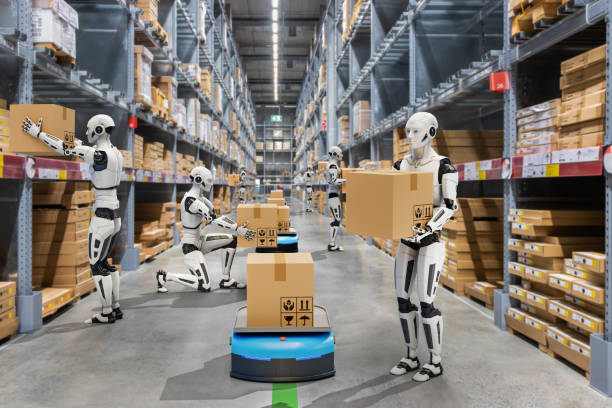In an era defined by technological leaps and bounds, businesses that embrace artificial intelligence (AI) are poised to thrive. AI is not a distant sci-fi concept anymore; it’s a game-changer that can revolutionize the way companies operate, enhance decision-making, and provide unparalleled insights into customer behavior. To become an AI-ready business, you must embark on a transformative journey that blends innovation with strategy. In this guide, we’ll explore the key steps to help your organization harness the power of AI and stay competitive in a rapidly evolving landscape.
Understanding the AI Landscape
Before diving into AI adoption, it’s crucial to grasp the AI landscape. AI encompasses various technologies, including machine learning, natural language processing, and computer vision. These technologies enable machines to analyze data, recognize patterns, and make decisions with minimal human intervention.
Do you have a software/mobile development project in mind? Contact us today and let us help you turn your idea into reality. We have the skills, experience, and passion to create amazing solutions for your business needs. Email us at sales@nesesho.com
Want to know more about our Tech Solutions? Visit us at www.nesesho.com
Step 1: Define Your AI Strategy
The first step toward AI readiness is to formulate a clear AI strategy aligned with your business goals. Start by identifying the specific problems AI can solve within your organization. Whether it’s automating repetitive tasks, improving customer service, or optimizing supply chain operations, understanding your objectives is essential.
Your AI strategy should also encompass the following:
Data Strategy:
AI thrives on data. Ensure you have a robust data strategy in place, focusing on data collection, storage, quality, and security. Data is the fuel that powers AI algorithms.
Skills and Talent:
Building AI capabilities requires a skilled workforce. Invest in training or hiring AI experts who can develop and implement AI solutions effectively.
Ethical Considerations:
AI brings ethical challenges, such as bias in algorithms or data privacy concerns. Develop ethical guidelines to ensure responsible AI usage.
Step 2: Identify Use Cases
Once you have a clear AI strategy, identify specific use cases where AI can make a difference. Start with manageable projects that align with your objectives and can demonstrate ROI. Common use cases include:
Customer Service Chatbots: AI-driven chatbots can handle routine customer inquiries, freeing up human agents for more complex tasks.
Predictive Analytics: AI can forecast demand, identify market trends, and optimize inventory management.
Personalized Marketing: AI can analyze customer data to tailor marketing campaigns, increasing engagement and conversion rates.
Step 3: Data Collection and Preparation
High-quality data is the lifeblood of AI. Collect and prepare data by cleaning, organizing, and ensuring its accuracy. AI models learn from historical data, so the more data you provide, the better the AI system becomes over time.
Step 4: Choose the Right Tools and Technologies
Select AI tools and technologies that align with your use cases and skillset. Common AI frameworks and platforms include TensorFlow, PyTorch, and scikit-learn for machine learning, and natural language processing tools like spaCy or NLTK. Cloud providers like AWS, Azure, and Google Cloud offer AI services and infrastructure.
Step 5: Develop and Deploy AI Models
Collaborate with data scientists and AI developers to create and train AI models. Implement rigorous testing and validation processes to ensure the accuracy and reliability of the models. Once validated, deploy the models into your existing systems or applications.
Step 6: Monitor and Optimize
AI is not a set-and-forget technology; it requires ongoing monitoring and optimization. Continuously evaluate the performance of your AI models and make necessary adjustments to improve accuracy and efficiency.
Step 7: Embrace Change and Learning
Becoming an AI-ready business involves adapting to a constantly evolving landscape. Stay updated on the latest AI trends, breakthroughs, and best practices. Encourage a culture of innovation and learning within your organization.
Conclusion
Becoming an AI-ready business is not just a technological transformation; it’s a strategic shift that can redefine your competitive edge. By aligning AI initiatives with your business objectives, investing in data quality and expertise, and fostering a culture of continuous learning and adaptation, you can harness the potential of AI to drive growth and innovation.
In a world where AI is becoming increasingly intertwined with business operations, the choice is clear: adapt and thrive or risk falling behind. The path to AI readiness may be challenging, but the rewards are boundless, opening doors to new opportunities, enhanced customer experiences, and a more efficient and competitive organization. Embrace AI as a powerful ally on your journey to a brighter, more data-driven future.
Do you have a software/mobile development project in mind? Contact us today and let us help you turn your idea into reality. We have the skills, experience, and passion to create amazing solutions for your business needs. Email us at sales@nesesho.com
Want to know more about our Tech Solutions? Visit us at www.nesesho.com



